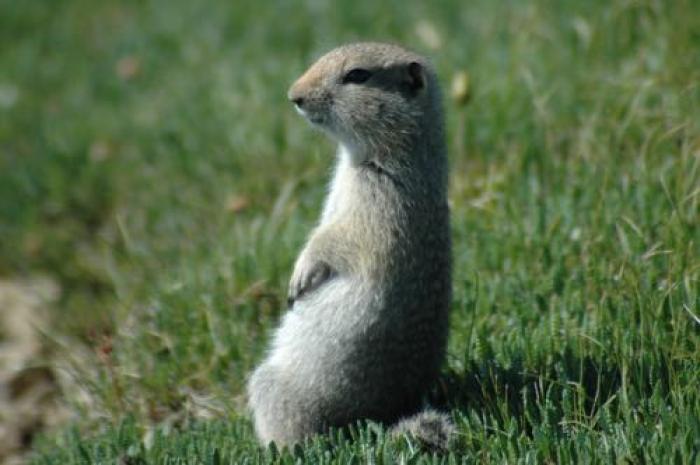The Arctic Ground Squirrel
I did a little research on Arctic ground squirrels (Urocitellus parryii) before heading north and wanted to share the basics with you. These are the largest and most northern squirrels in North America. They are found in Alaska, northern Canada and also in Siberia, Russia. They live in colonies of hundreds of squirrels, but are also highly territorial. During winter, each squirrel has its own burrow, which extends about three feet below the surface and serves as a hibernaculum. In the summer months, they utilize many burrows, some of which are connected together with tunnels. They have strong front paws for digging and burrowing.

Food
Arctic ground squirrels are mainly vegetarians and eat pretty much all parts of plants, including seeds, leaves, roots, stems, berries, and flowers. They also eat mushrooms. They will even eat meat that they find from freshly killed animals (including other Arctic ground squirrels!). During the summer, males will store leaves, seeds, and grasses in their burrows to use as a store of food for when they wake up from hibernation but before spring plants start to grow. Female arctic ground squirrels hibernate longer than males and don’t store food.
They are also prey to many species, including golden eagles, gyrfalcons, Arctic fox, red fox, wolverine, lynx, and grizzly bears.
Homeostasis
Arctic ground squirrels have the lowest body temperature of any mammal ever recorded during hibernation, with core body temperatures that go below freezing. It's called supercooling. The temperature of the brain, though, stays just above freezing. Although they hibernate for 7-9 months every year, every 2-3 weeks they use a special organ called brown adipose tissue, or BAT, to begin warming their body temperature. Once they get to about 70 degrees F, they start to shiver and shake to get their body temperature back to their normal 98 degrees F, all while still hibernating. They spend only about 18 hours at 98 degrees F, before they once again suppress their metabolism and allow their bodies to cool close to freezing.

Females start to hibernate once they have enough body fat to survive winter, usually in August. It's early, but hibernating means less chance of being eaten by a predator. Young of the year squirrels (squirrels born that summer) have to grow prior to putting on the body fat required for hibernation and usually don't start hibernating until late September or October. Similarly, males are busy caching food in the fall and don’t begin hibernating until October.
Babies
Adult males emerge from their burrows first in the spring, digging out of the snow. The squirrels mate in late April/ early May, within days of the females coming out of their burrows from hibernation. Gestation is about 25 days, and five to ten babies are born blind and hairless in late June. They are already fully weaned and living on their own by September.

Fun Facts
- Interestingly, the squirrels are very vocal and chatty.
- They can also swim and have been seen crossing streams.
- And when the weather is bad, they stay at home. Just like me.


Comments